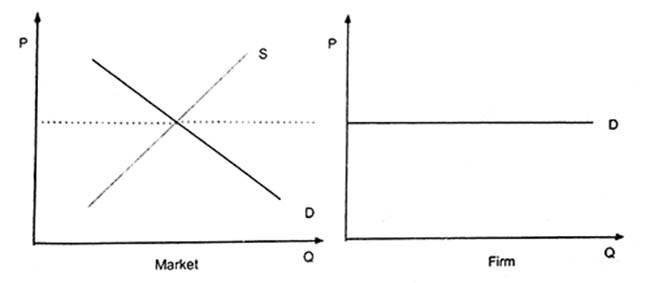In a perfectly competitive market the market demand curve is a downward sloping line, reflecting the fact that as the price of an ordinary good increase, the quantity demanded of that good decreases. Price is determined by the intersection of market demand and market supply; individual firms do not have any influence on the market price in perfect competition. Once the market price has been determined by market supply and demand forces, individual firms become price takers. Individual firms are forced to charge the equilibrium price of the market or consumers will purchase the product from the numerous other firms in the market charging a lower price (keep in mind the key conditions of perfect competition). The demand curve for an individual firm is thus equal to the equilibrium price of the market.

Demand Curve for a Firm in a Perfectly Competitive Market
The demand curve for an individual firm is equal to the equilibrium price of the market. The market demand curve is downward-sloping.
The demand curve for a firm in a perfectly competitive market varies significantly from that of the entire market. The market demand curve slopes downward, while the Perfectly competitive firm’s demand curve is a horizontal line equal to the equilibrium price of the entire market. The horizontal demand curve indicates that the elasticity of demand for the good is perfectly elastic. This means that if any individual firm charged a price slightly above market price, it would not sell any products. ,
A strategy often used to increase market share is to offer a firm’s product at a lower Price than the competitors. In a perfectly competitive market, firms cannot decrease their product price without making a negative profit. Instead, assuming that the firm is a profit-maximize, it will sell its goods at the market price.












